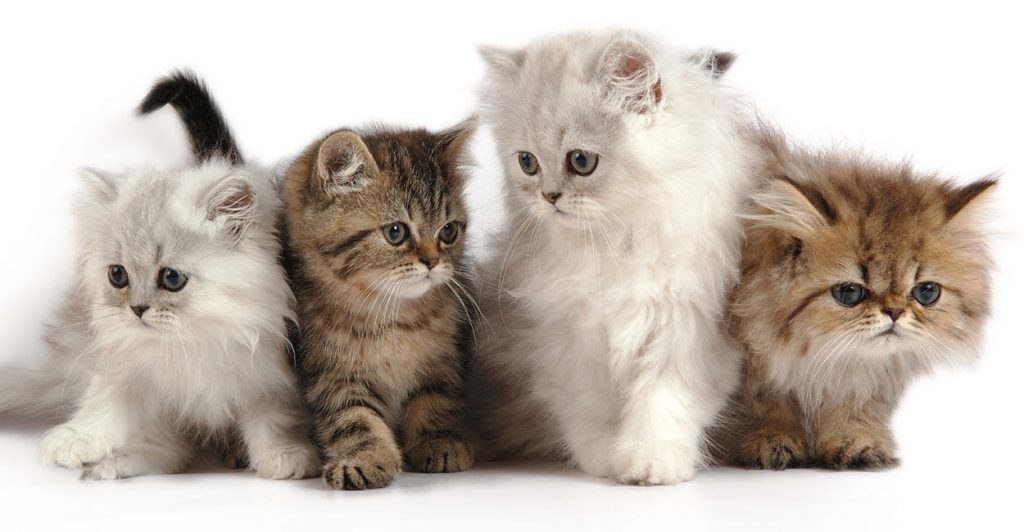
Persian cats have a distinctive flattened face and long hair. They have rounded heads, snub noses and wide eyed expressions. But this gorgeous look comes at a price. Today, I want to raise a question of ethics, and to dive a bit deeper into the potential downsides of what is an otherwise absolutely brilliant breed.
The Appeal Of The Persian
Persian cat personality is a major reason for their popularity. This sweet, gentle soul normally makes for a very laid back companion in the house. Although they have short bursts of playful energy, your happy Persian cat will probably spend most of her days relaxing. Unlike some pedigree breeds her meow is quiet and unintrusive, and she provides a chilled out living companion.
They are by and large friendly, loyal cats. This breed is known for being people focussed and easily handled. A great choice for a home-loving family who will love to have a furry friend cuddle up next to them on the couch. And they are the perfect size for snuggling too!
Persian cat size averages at around 8 – 10 lbs in weight. As they are inclined to be sedentary, you will need to make sure that your Persian cat has their food appropriately restricted to maintain a healthy size.
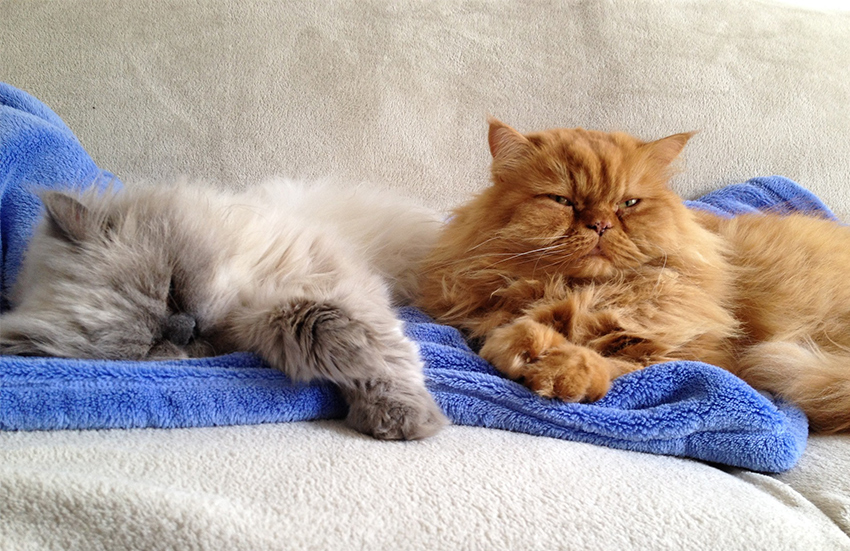
Persian Cat Colors
These gorgeous coats might need a lot of work, but they have a wonderful range of shades. There are several solid Persian cats including black, blue, chocolate, lilac, red and white. White Persian cats have copper or blue eyes, and occasionally one of each. The rest of the solid Persian cats have copper eyes.
Silver and Golden Persian Cats come in either shaded or chinchilla patterns. Shaded have some black fur on their backs and sides. Chinchillas Persian kittens have black flecks on their head, body, legs or tails. Silver and Golden Persians have either green or blue eyes, and black pads on their paws.
Tabby Persian cats can be classic, spotted or patched in design. All tabby Persian cats have copper eyes, except for the silver tabbies who can sometimes have green or hazel eyes instead.
Other Persian Patterns
Persian cast also come in Tortoiseshell and Calico coats. Tortoiseshell cats have black coats with red patches, whereas Calicos have white coats with red and black patches. They all have copper colored eyes.
You may have seen colorpoint Persian cats, with a Persian appearance and a Siamese colored coat too. They are predominantly white cats, with just a hint of color on their facial mask, tips of their ears and feet. Himalayan Persian cats always have blue eyes too.
These Colorpoint or Himalayan Persian cats were created in the 1950’s by cross breeding Persians with Siamese cats. These Persian Siamese mixes were then bred back to purebred Persian cats. This gave them the distinctive Siamese pattern, with the appearance of a Persian.
Himalayan Persians were recognised as a separated breed in their own right by the Cat Fanciers Association in the late 1950’s. Although they are physically identical in every other way to a Persian cat they are technically not the same breed.
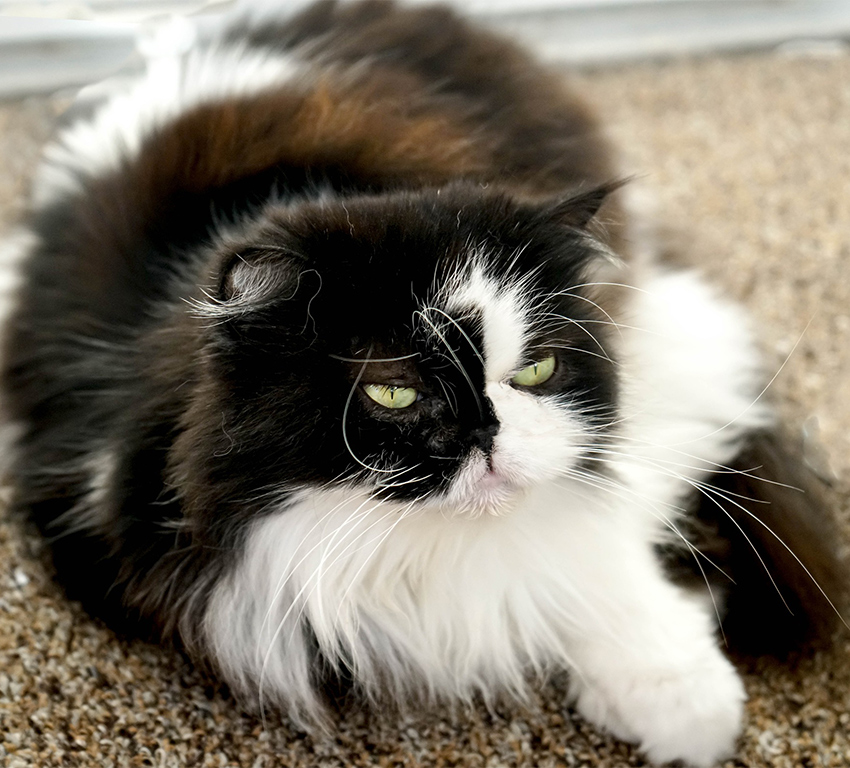
Persian Cat Grooming Is Tough
Persian cat grooming is a big task. This long silky coat needs daily grooming. This can be carried out in under ten minutes as long as you do it every day, using a metal comb to remove tangles and any dirt particles
Despite being kept indoors by most owners, a Persian cat will still need a monthly gentle bath. If you start getting her used to this from kitten hood, it should be accepted without too much fuss. If you have a white Persian cat you will also need to wipe around her eyes and tail on a daily basis to reduce discoloration.
You cannot afford to skip a day or miss out on their grooming when your schedule is tighter than usual, as it can rapidly become matted and unmanageable. Many pet Persian owners keep their cat’s back end clipped to reduce matting and help them to stay hygienic.
Persian cat shedding is what you would expect of a long haired breed of cat. You will need to groom them daily, but they will still moult and leave hairs around your house. Regularly thorough vacuuming will help you to stay on top of this.
Persian Cat History
Although they are named as being from Persia, now known as Iran, there are rumours of this being an ancient breed. Some people even believe that they are described in Ancient Egyptian hieroglyphics. What we do know with a great degree of confidence is that from around the 16th Century these long haired desert cat kittens were removed from the wild.
They were exported from Persia, and became popular pets. In the late 1800’s they became well established on the world stage, being exhibited at cat shows and getting a lot of recognition.
Changing Over Time
Today Persian cats are one of the most popular pedigree breeds in the world. And they look very different from their dessert cat ancestors. Although Persian cats did have shorter than average muzzles originally, these would not have been the completely flattened faces that we are so familiar with now.
This extreme breeding has led to some unfortunate consequences.
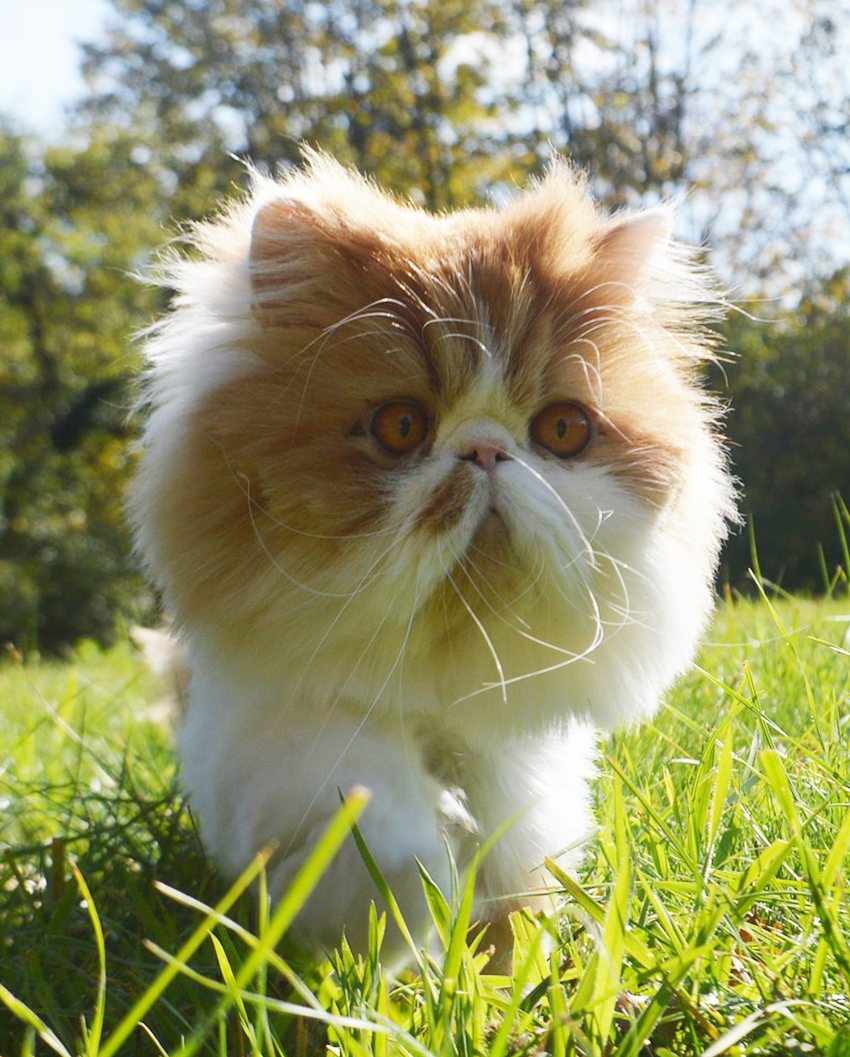
A Question of Health
Persian cats have flat faces. Over the years these have been bred to quite an extreme, due to the popularity of that snub-nosed look. Unfortunately, having a flat face is not very good for a cat’s health. It causes a condition known as ‘brachycephaly’, which can have a lot of unpleasant health implications.
Tear Duct Overflow
Due to the structure of their face, Persian cats can have tear duct problems. This means that they can constantly leak, causing staining to the fur under the eyes or in the worse case scenario sore skin from the constant moisture.
Eye Problems
Brachycephaly can also lead to eye problems in Persian cats. Their protruding eyes can be more easily damaged by their normal daily activities, or even by their own long fur rubbing onto them. You need to regularly check a Persian cat’s eye health to ensure that they are not suffering discomfort.
Breathing Problems
Persian cats can suffer from breathing problems as a result of their flat faces. They find it harder to regulate their body temperatures and are not as able to exercise as other cats. Although Persians may seem less energetic, this can sadly be simply as a result of being physically unable to exert themselves rather than a lack of interest in doing so.
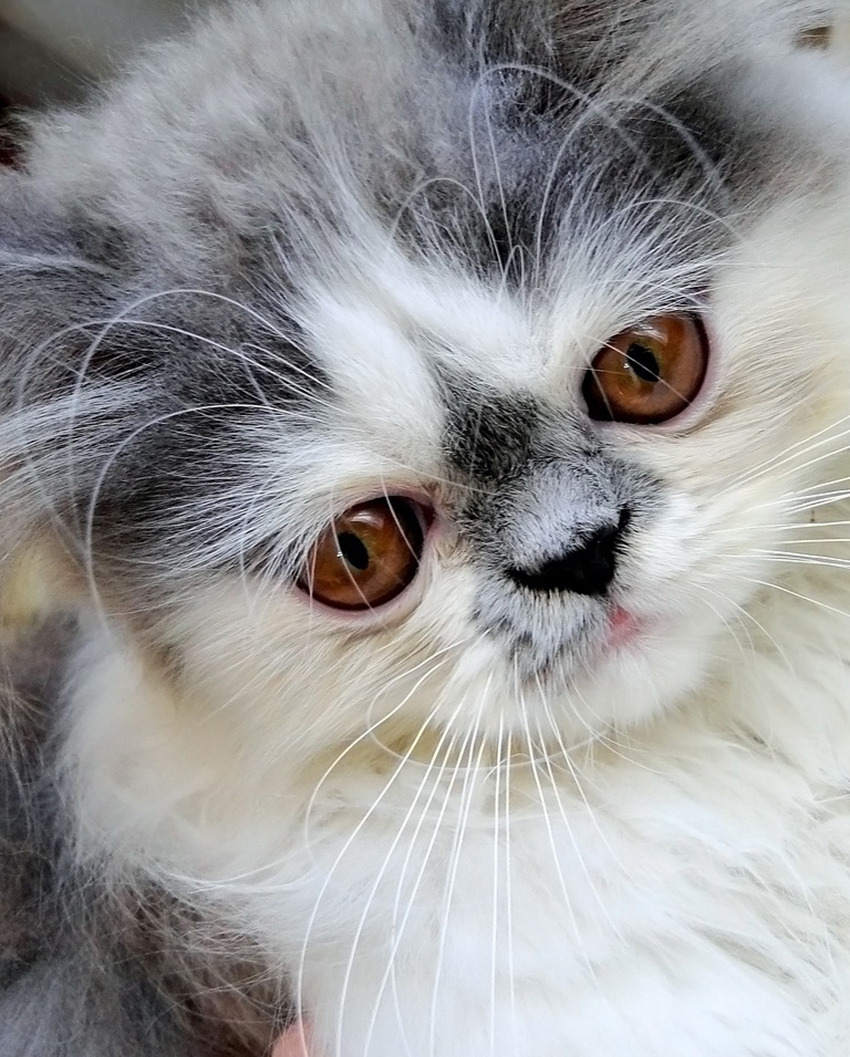
Pedigree Cat Genetic Diseases
Like other pedigree breeds who are subject to a limited gene pool, Persian cats have an increased risk of suffering from some genetic diseases. PKD was a big problem for Persian cat breeds, but the breed clubs are happier now that this is becoming under control thanks to a dedication to DNA testing. It is still thought that 30-40% of Persians carry PKD. Only buy a Persian kitten from a breeder who has ensured that both parents were DNA tested clear for PKD.
Other potential diseases that Persian cat owners should be aware of are Chediak-Higashi Syndrome, Congenital Ankyloblepharon and Hip Dysplasia. This only affects cats with blue smoke color. There is not currently a DNA test, but it can be diagnosed with a blood test. You can avoid it by avoiding this color.
Hip Dysplasia can be found in Persian cats, and can be shown through x-rays of the parents. However, this is not common practice. Therefore observe the parent cats and see whether they have any stiffness to their movements or reluctance to jump.
Persian cats are also prone to ring worm and skin conditions too. And you should also consider the fact that while the average kitten mortality up to 8 weeks is 16%, in Persians it is a staggering 25%. A worrying statistic for any potential Persian kitten parent.
How Long Do Persian Cats Live?
Persian cat lifespan is anecdotally given as being from 8 to 11 years old. This is not a long lived cat breed, especially considering that they are predominantly kept indoors away from traffic and predation.
Persian Cat Food and Feeding
Persian cat food is available to buy as a specific type of food. Although they can thrive on generic good quality cat food, these are designed to suit their laid back lifestyle and the shapes of their jaws a little better.
Persian cats are known for being picky eaters, but this is something that can be common to many breeds of cat. You must carefully monitor your Persian cat’s eating habits, because they can have trouble chewing due to their flattened faces.

Persian Kittens
When you are buying a Persian kitten it is vital that you find a breeder who is committed to not just sustaining, but improving the health of Persian cats. Look for one who breeds for less exaggerated facial shapes, who health tests their cats and who is happy to discuss their medical history with you in an open fashion. The doll faced Persian is a potentially healthier choice.
Many Persian cat breeders will not sell their Persian kittens until they are 13 weeks old, as this is the age advised by the Persian Cat Clubs. If you pick up your kitten at this age, they should have already had their first vaccinations and your breeder should have certification to prove this.
The Cost
Persian cat cost is not as high as some pedigree breeds, due to the popularity of them. If you are looking for a pet Persian rather than a show quality Persian they will be cheaper. In the USA you can expect to pay between $700 – $1000 for an average pet pedigree Persian kitten. For a show quality Persian this will be significantly more, perhaps up to $3,000!
Good breeders looking to improve their lines with health testing will need to charge more for their kittens, as they are investing more into them. The best breeders are not necessarily show breeders. Take health as your primary goal, and go from there.
Adoption vs Breeders
Buying a Persian cat is a big commitment. If you want one, we highly recommend going to a rescue and finding a Persian cat that needs a new home. This means you get the breed you want, without promoting the breeding of a cat with such a lot of potential health issues.
These cats will often be older and unlikely to have a pedigree certificate, but can provide the wonderful companion of a Persian kitten with some more known aspects. Persian cats for adoption will probably have been vet checked already, and you can see their likely temperament before you even bring them home.
You must be sure that you have the time to commit to coat care every single day, to keep them in as healthy a condition as possible. You also need to be able to afford full pet insurance cover, should the worst happen and your Persian cat become unwell.

I have seen a lot of cat websites that list the Persian’s life expectancy as 15 to 20 years, and I always found that hard to swallow given the respiratory problems that go with the flat face.
I suspect that the Persians with brachycephaly have life expectancies of 8 to 11 years, while the ones with longer muzzles, which are sometimes called “doll-faced” or “traditional” Persians, enjoy longer life spans.
Not true ! My flat face cat is still alive at 13!
hi lucy very nice details share you thanks
Sara,
That is good to hear. This is my first time checking out life expectancy for my Persian, Chip, who is a flat face and is 10 years old. I adore him but see him slowing down a bit. Have other cats including a 10 year old Himalayan and 3 calico females ages 14, 8 and 6. Chip is my only male and only flat face. I love them all, but he definitely has my heart and soul.
My Persian male lived to 15 1/2.
He had teeth problems, and asthma in the last 4 years of his life.
He needed oxygen tent treatment during attacks, and I learned to manage his illness, even nebulizing him with albuterol in his tent.
I loved that cat (Rocky Racoon) more than any other, the health troubles while extreme can never outweigh the companionship, and pure joy of his warm personality.
RIP Rocky 2-13-2018
I have a grey Persian with a normal face….she’ll be 17 in September. Apart from a bit of arthritis in one of her hips,she’s as active & playful as she’s always been. She’s my baby girl ?
i have a persian cat name Diamond, one of the most handsome happy, and healthy cats have ever seem every one love him.
Our cat Ceaser is 15 and a half. He was a former quad grand champion. He has slowed down this year and is having issues with his mouth. We love him dearly. He is a cream and white and flat faced.
At 8 years old, I came home to find my wonderful “healthy” boy dead. Meaux Kitty was the most loving happy kitty I have ever known. My heart and home is broken without him. We are looking for a Persian bash again. It seems that the breeders we have found only care about the money not the breed. Any advise?
My sweet boy ‘Cooper’ red & white Persian was 14. I took him to the vet bc he wasn’t himself for the past couple weeks, was still eating but not as much, sleeping in different spots in the house than normal. Nothing I could really put my finger on. The vet checked him out bloodwork was good, a slight ear infection. We left and the next morning he was struggling to breath rushed him back. They said I needed to leave him so I did. They called me 30min later and he was dead before I could get back there. Said he was full of cancer, he never let us know he was that sick. I’m heartbroken, I didn’t get to tell him goodby, or tell him how much he was loved. 08’-22’ RIP